Walt Disney's Family Home
Introduction
Text-to-speech Audio
From 1914 to 1921, this house was home to the family of world famous film animator Walt Disney. It was here that Disney first developed a passion for entertaining and an interest in cartooning. Walt set up a makeshift art studio in the garage where he used a borrowed motion picture camera to experiment with different animation techniques, creating what became the first Laugh-O-gram shorts and the start of his success. Various members of the Disney family occupied the residence until November 1921, when Walt’s father sold the house. Today, it remains a private residence and is not open to the public. The house and garage were added to the National Register of Historic Places in 1977.
Images
An early photo of Walt Disney's childhood home at 3028 Bellefontaine Avenue.
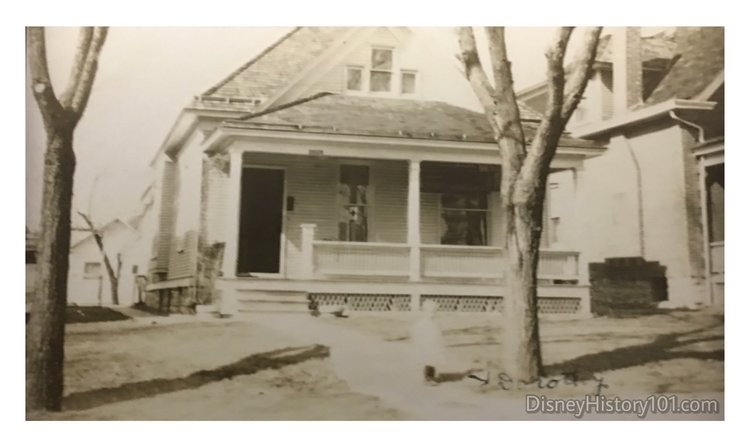
The garage where Walt Disney got his start in animation, located behind his childhood home on Bellefontaine Ave.
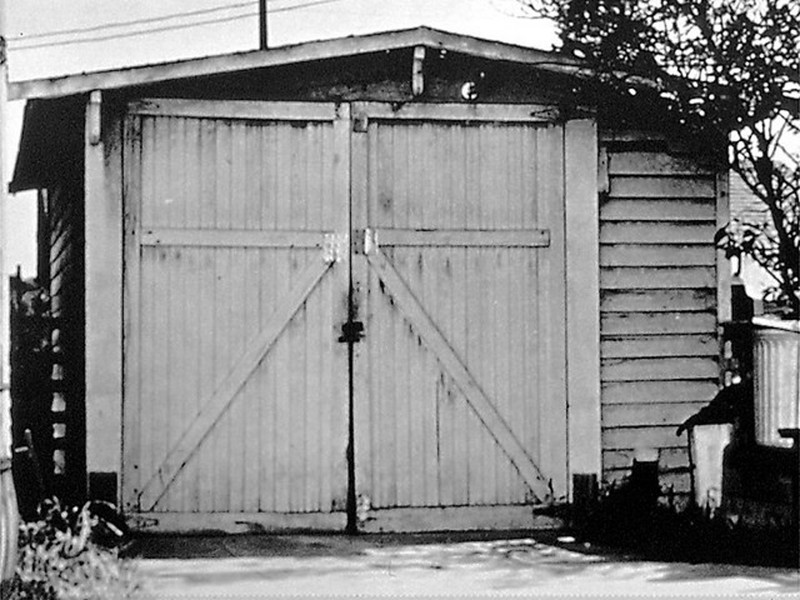
The Disney Family c. 1915. Back row (from left to right): Herbert, Louise, Elias, and Flora. Front row: Walt and Ruth.
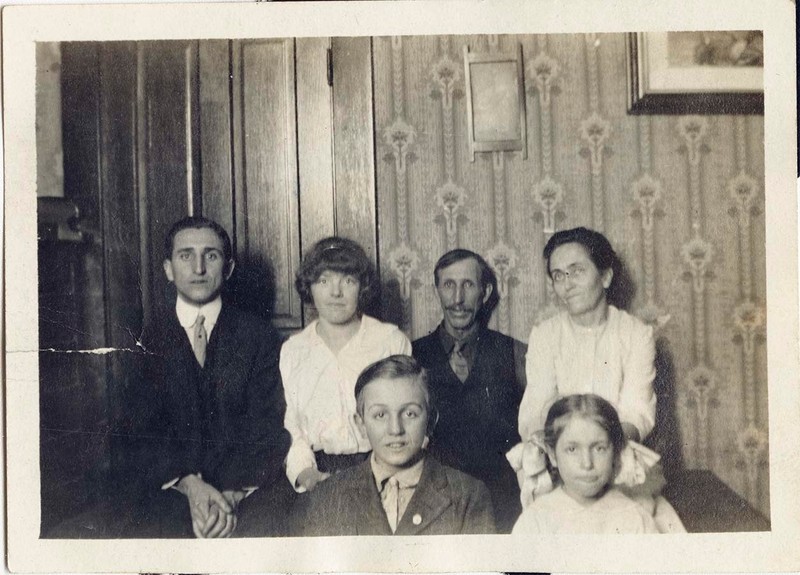
A young Walt Disney (right) with his close friend and neighbor Walt Pfeiffer (left). The pair would often perform amateur comedy sketches together, which gave Disney his first taste of entertaining.
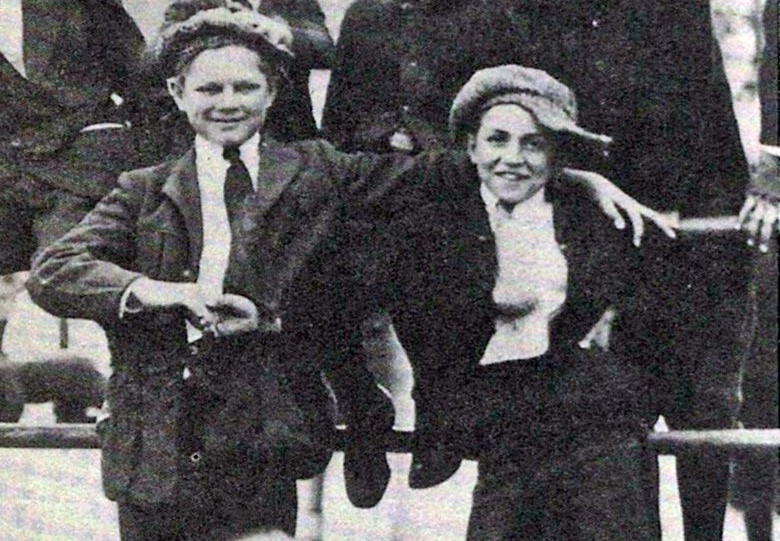
A portrait of young Walt Disney.
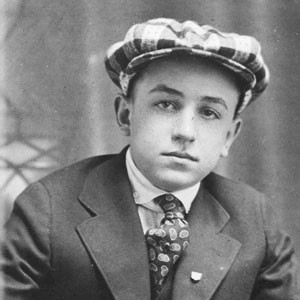
Walt Disney in his Red Cross uniform.
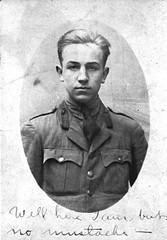
A letter from Walt Disney to his high school classmates in Chicago while stationed in France. Dated April 13, 1919 from Somewhere in France.
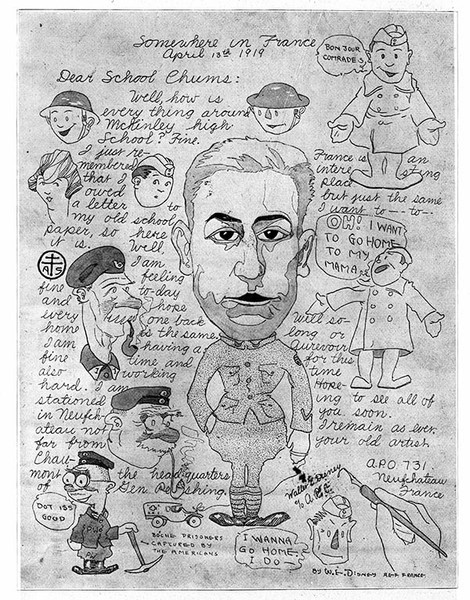
A cartoon drawn by Walt Disney to promote himself as a cartoon artist. Note how the address was originally listed on Bellefontaine and crossed out to the location of KayCee Studio.
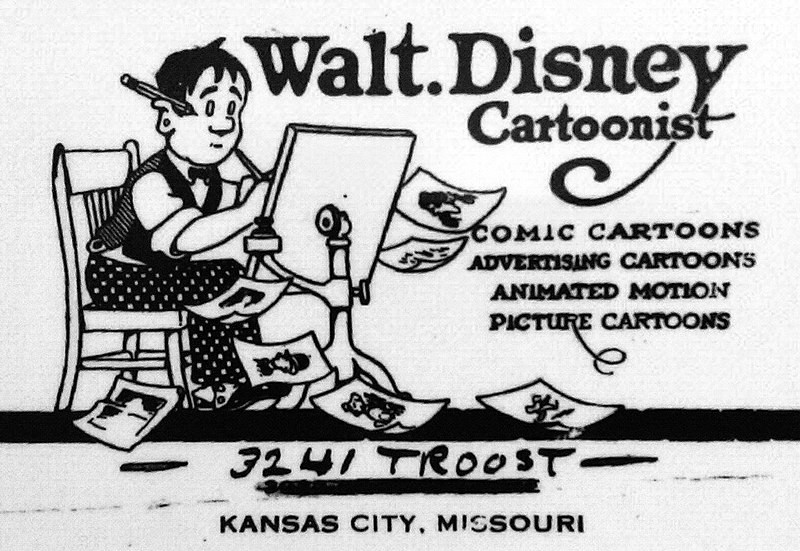
The title page of the original Newman Laugh-O-gram, created in the Disney family garage.
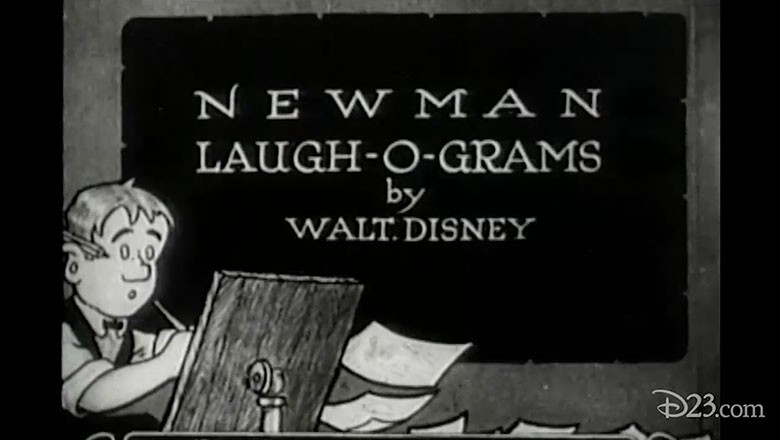
Backstory and Context
Text-to-speech Audio
Walter Elias Disney was born in Chicago, Illinois on December 5, 1901 to Elias and Flora Disney. In 1906, the family moved to a farm near Marceline, Missouri, which was close to Elias’s brother Robert. Walt’s years in Marceline are considered by many to be the happiest and most influential time of his childhood. Here, he was surrounded by nature and would lie under a large cottonwood tree where he would observe and draw wildlife, developing a love of animals. In addition, Marceline’s three-block commercial district was the inspiration for Main Street U.S.A in the Disney theme parks. Elias was not able to run a successful farm and after becoming hospitalized with typhoid, Flora encouraged him to sell the farm.
In the summer of 1911, the Disney family boarded the Santa Fe railroad and moved to Kansas City, Missouri. First, they rented a house at 2706 East 31st Street, which was near the delivery route that Elias had acquired for the Kansas City Star and Times newspapers. In 1914, after a few years of detesting living on a major street, the Disney’s purchased a house just a few blocks away, at 3028 Bellefontaine Avenue. By this time, Walt and his brother Roy were working for their father on the newspaper route. They would wake up as early as three-thirty in the morning to collect the papers and deliver them to each house, as well as leave school early to deliver the evening edition. Elias had high standards for the boys, expecting them to place the papers between the screen door and front door versus tossing them from the sidewalk. However, the boys did not get paid as they were told they were working for their room and board, so Walt took on odd jobs for pocket change. He swept floors at a candy shop and drew caricatures of people at Bert Hudson’s Barbershop. He found a love of cartooning and began taking Saturday art classes in the youth program at the Fine Arts Institute of Kansas City (now Kansas City Art Institute).
Two houses down from the Disney’s lived the Pfeiffer’s, who became a second family to Walt. Unlike Elias, John Pfeiffer was a warm, supportive, fun-loving man who loved playing with his children. Walt quickly befriended his son Walt and would often perform makeshift comedy sketches together. These early acts helped Walt develop an interest in the entertainment industry. Years later, John Pfeiffer gave Disney business in his early 1920 venture of Iwerks-Disney Studio, while Walt Pfeiffer worked for Walt Disney at his Laugh-O-gram Studio and later made a career with Disney Studios in California.
Elias returned to Chicago in the spring of 1917 when he invested in the O-Zell jelly factory, taking Flora and Ruth with him. Walt followed later in the fall after graduating from his grammar school, Benton School and working a summer job as a news butcher with the Van Noye Interstate News Co.. Walt’s brothers Roy and Herbert, and Herbert’s family, continued to live in their Bellefontaine family home. Walt attended McKinley High School in Chicago and became a cartoonist for the school’s magazine The Voice and yearbook. In the summer after his freshman year, he got a job with the Post Office where he learned to drive a mail truck, and decided to enlist in the Army shortly after. However, at age 16, Walt was turned down but learned that the minimum age to sign up for the Red Cross was only 17. With Flora's help, he falsified the year of birth on his birth certificate (from 1901 to 1900) and forged Elias’s name on his passport, and was accepted for service.
Walt deployed for France in November 1918, a week after the Armistice. There, he drove ambulances and chauffeured Army officers. In his free time he commissioned sketches of his colleagues and gambled, making a small fortune. He first returned to Chicago after a 9 month stint but quickly made plans to head back to Missouri, reconnecting with his friends and brother Roy. Flora held on to Walt’s savings and he caught a train to Kansas City. He arrived in October 1919 and moved back into the Bellefontaine house with his brothers. Walt took some drawing samples to the local newspapers to get his foot in the door as a cartoonist, but no one had positions available. Roy heard from a co-worker that his friends Louis Pesmen and Bill Rubin were looking for an apprentice in their art studio, and got Walt the job.
The position at Pesmen-Rubin was not long lasting as Walt was laid off after just six weeks. He did, however, meet Ubbe Iwwerks there, who he partnered with to open his first small studio called Iwwerks-Disney in January 1920. By February, Walt responded to an ad in the Kansas City Star for a Cartoon and Wash Drawing Artist with Kansas City Slide Co. (later Kansas City Film Ad Service). During his time at Film Ad, Disney borrowed a motion picture camera from his boss A. V. Cauger and began experimenting in a makeshift art studio he created in the garage behind the Bellefontaine house. These experiments led to the creation of a series of humorous shorts based on local events that he called Laugh-O-grams. They were first sold to Newman Theatre and publicly debuted in March 1921.
Elias sold the Disney family home in November 1921 when he left for Oregon to meet his oldest son Herbert, who promised prosperity. Walt moved into a boarding house and rented a small office where he started KayCee Studio and continued working on his Laugh-O-grams. By this time they were satirical animations based on fairy tales. In the spring of 1922, Walt quit Film Ad and incorporated his first professional studio Laugh-O-gram Films in May. The studio struggled however, and Walt left Kansas City for California in late summer of 1923.
The House
This home was built in 1905 as a simple Builder’s Vernacular style wood cottage. Elias Disney expanded the house over the years, building a new kitchen, bathroom, and additional bedroom, as well as a small detached garage in the backyard. Various alterations have been made to the exterior of the home over the years, as well as the original wood frame walls of the garage replaced with cinder blocks. Both the house and the garage were added to the National Register of Historic Places in 1977.
Sometime during the 1940s the home was purchased by Booker and Rebecca Young and has remained in the possession of their descendants to this day. As a private residence, it is not open to the public.
Sources
Barrier, Michael. “The Pet in the Family: On the Farm and in the City, 1901-1923.” In The Animated Man: A Life of Walt Disney. Berkley and Los Angeles: University of California Press, 2007.
Green, Ron. “The Roots of Animation in Kansas City.” Jackson County Historical Society Journal (Summer 2014): 15-19. Accessed June 9, 2018. https://static1.squarespace.com/static/51181e81e4b04512ec820440/t/53d5510de4b02f566ee1b0e6/1406488845322/disneykc.pdf
“History.” Thank You, Walt Disney Inc. Accessed June 9, 2018. https://thankyouwaltdisney.org/history/
Karel, Victoria C. “Disney, Walt, Residence and Garage.” National Park Service. 1977. Accessed June 9, 2018. https://dnr.mo.gov/shpo/nps-nr/78001654.pdf
“What is Walt Disney’s connection to Kansas City?” Missouri Valley Special Collections. Accessed June 9, 2018. http://www.kchistory.org/faq/what-walt-disneys-connection-kansas-city
Butler, R. W., Viets, D., Burnes, B. (2002). Walt Disney's Missouri: The Roots of a Creative Genius. Kansas City, MO: Kansas City Star Books.
https://www.disneyhistory101.com/new-blog-1/2018/8/25/kansas-city-missouri
https://www.unclewaltpodcast.com/episodes/?offset=1502784005867
https://www.pbs.org/wgbh/americanexperience/features/walt-disney-close/
https://www.pinterest.ca/pin/326792516682541625/
https://d23.com/about-walt-disney/
http://disney.go.com/disneyvideos/moviefinder/html/memorylane/ml18pop2.html
https://www.pbs.org/wgbh/americanexperience/features/walt-disney-close/
https://www.thetimelinemachine.com/articles/100-years-of/100-years-of-disney-animation/
https://thankyouwaltdisney.org/
